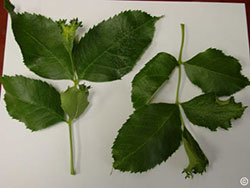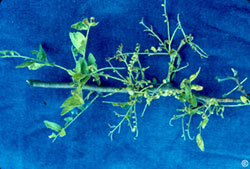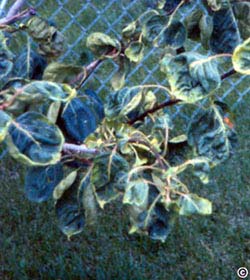What causes plant abnormalities?
The most common plant abnormalities show up as curled or cupped leaves. Insects, mites, disease organisms, herbicides and weather events can all lead to malformation of leaf, stem, flower or fruit tissue.

How do I tell if my plant has insects?
Examination of the leaves is the first step in diagnosing the problem. Insects, such as aphids, can be seen unaided, but viruses and mites that cause distortion are often too tiny to see without a tissue analysis or microscope. If you suspect a virus or mite problem, you may need to send a sample to a diagnostic lab.
Do weed killers cause plant abnormalities?
 Weed killers, such as 2,4-D or Weed-N-Feed, sprayed in the affected area can volatilize and drift. Such drifting can curl and cup the foliage on nontargeted plants. Weather events, such as cold temperatures when leaves are emerging from the bud, also can cause leaf malformation.
Weed killers, such as 2,4-D or Weed-N-Feed, sprayed in the affected area can volatilize and drift. Such drifting can curl and cup the foliage on nontargeted plants. Weather events, such as cold temperatures when leaves are emerging from the bud, also can cause leaf malformation.
What could cause abnormal growth in a flower?

Distorted, abnormal growth occurring in the flowers of a plant is likely caused by aster yellows. Aster yellows is a disease caused by phytoplasma, which are somewhat like bacteria and cause a variety of unusual and strange symptoms. The heads of flowers may be deformed or lopsided and the flowers may remain yellowish-green, regardless of the variety’s normal color. Leaves may also be yellow and the veins pale white.
Should I remove distorted leaves?
 Distorted leaves can be picked off a plant, if insects are the cause. Plants tend to outgrow damage caused by cold injury and low doses of herbicide. If virus or aster yellows is the cause, entire plants must be removed to control the disease.
Distorted leaves can be picked off a plant, if insects are the cause. Plants tend to outgrow damage caused by cold injury and low doses of herbicide. If virus or aster yellows is the cause, entire plants must be removed to control the disease.
How can I control distortions of a plant?
Control of abnormal, distorted plant-growth problems depends on the actual cause. Clinics located in your local Colorado State University Extension office, local garden centers and nurseries can assist with diagnosis.
For more information, see the following Colorado State University Extension fact sheet(s).
- Fire Blight
- Recognizing Tomato Problems
- Cooley Spruce Galls
- Potato or Tomato Psyllids
- Insect and Mite Galls
- Poplar Twiggall Fly



